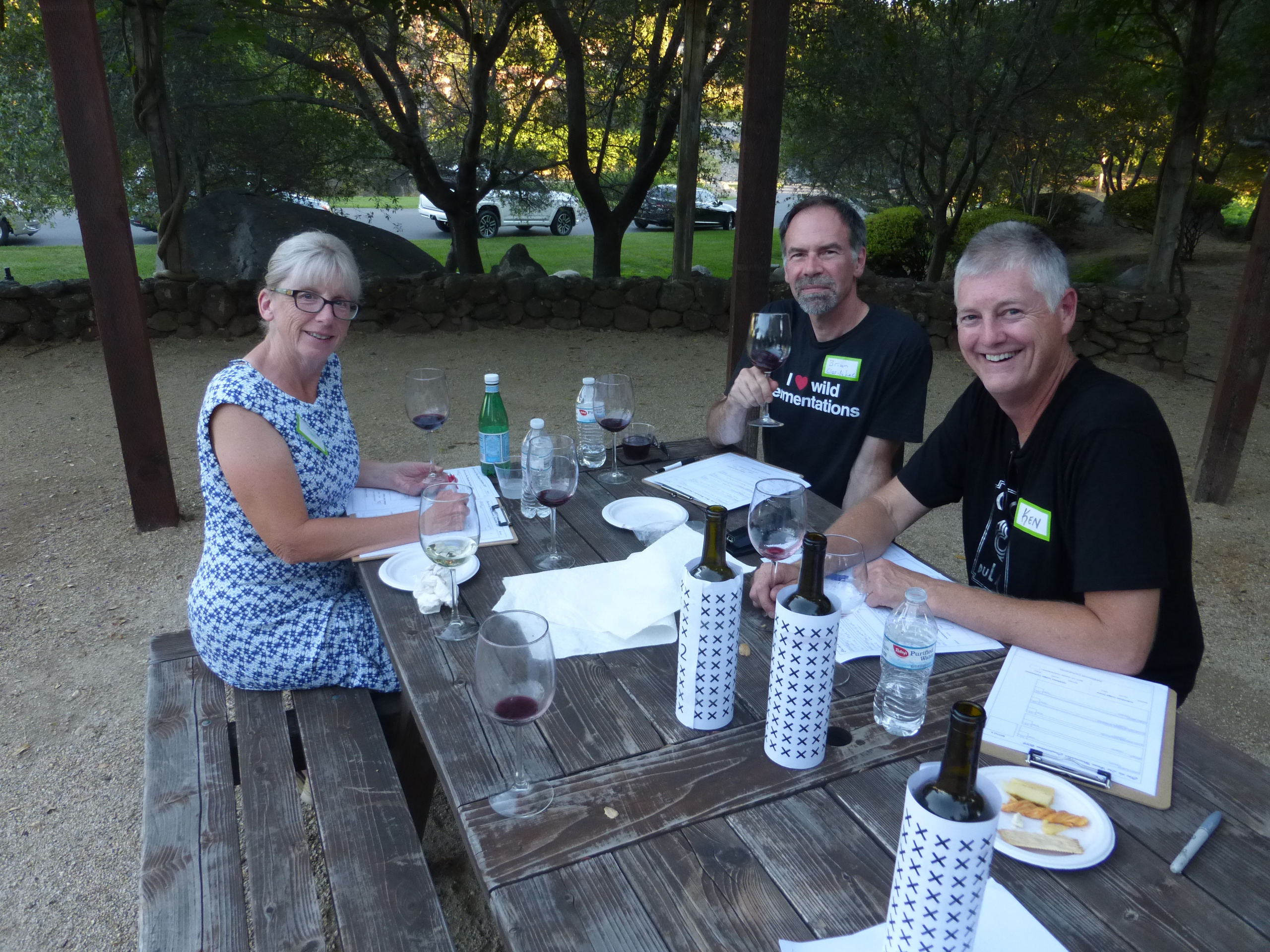Recently I was privileged to judge in my first wine competition. Clos du Lac vineyards sponsored a home winemaker competition for Sacramento Home Wine Makers. Ours was a fairly small competition, with just 12 entrants, so this was a good first time experience. Three of us from the vineyard committee acted as the judges. Two of us are home winemakers ourselves, and the third is a sommelier. We used a simplified version of the standard wine judging form. Each wine was rated based upon:
- Color/Clarity
- Bouquet
- Acid/Sweetness/Body/texture
- Flavor
Then a final overall summary rating, followed by a Bronze, Silver, or Gold rating, and a note on whether or not the wine should be a best of show candidate.
We ended up breaking up the wines into three flights of four wines each for rating. The first group ended up being the Cabernet based blends. Yeah, I know we should have done those last, but that’s not how it worked out.
The first few wines were the hardest to rate, because essentially you are setting the scale by which all of the others will be rated. Carol, our somm, suggested just rating the wine on it’s quality overall just like we might judge commercial wines, but in the end, since we’d be giving these home wine makers our ratings right there once we completed the judging, I think we all erred on the more generous side. The key for me was to call out the positive attributes and then provide constructive feedback regarding any negative aspects.
The Cabernet Sauvignon based wines we’re almost all on the lighter end of the spectrum given that this fruit came from the Sierra Foothills. These were all very young wines, one of which had only been bottles a week early, so this was only a step removed from barrel tasting. Remarkably our assessments on most of the wines was very similar. We had no issue agreeing on the best of the cabs. Nor did we have much debate regarding the best of the italian varietals. The last batch was a bit more controversy in that the wine that Ken and I felt was the best of the the Cab Franc, Carol gave a Silver to, and as such it wasn’t eligible for best in class, and our second in that class (which we all gave Gold) won the class.
Finally for best in show, we compare the three best in class wines, and again it was a split decision, but in the end the Barbera won.
It’s harder than you might imagine, putting into words what you like or don’t like about a wine that someone has poured their time and energy into. Most of the wines were good clean wines and virtually all were drinkable. The difference between these wine and good commercial product was the degree of complexity and interest. Most of these wines were single note or two note wines. Coming from the Foothills, a number of them were challenged for acidity, but the best of the wines were indeed quite nice.
This was just a small competition with just twelve wines, and it was quite challenging from the standpoint of time management – putting enough effort into the ratings without spending 15 minute on each wine – but also from keeping track and being able to taste that many wines and judge each fairly. Stressful, but fun!

